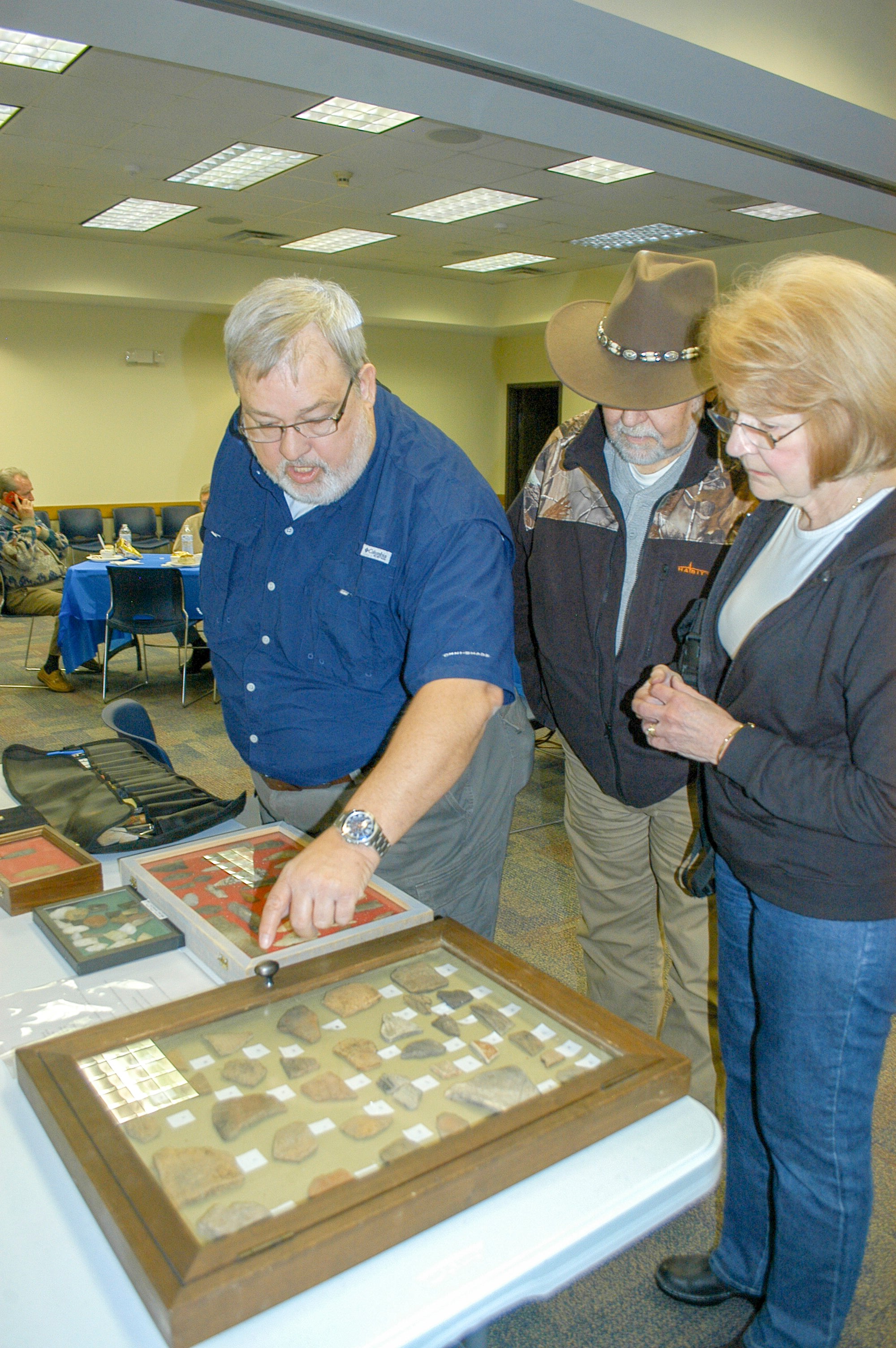Archaeology professor enjoys work with students
Published 8:30 pm Thursday, March 14, 2019
VALLEY — At Bradshaw-Chambers County Library’s fourth and final Making Alabama Lunch N Learn program, Dr. Dana Chandler talked about how much he’s enjoyed working with high school students on archaeological digs in Randolph County. The program took place during the noon hour in the library’s Lanier Room.
Chandler teaches archaeology at Tuskegee University and spends a lot of time in Randolph County, where he instructs students from Handley High proper archaeological techniques. He said the students are always excited when they find something but more important, it’s what they’re learning.
“It’s not what you find. It’s what you find out,” he said. “You learn how ancient people adapted. My partner at Handley High is Meredith Sears. She’s a great teacher.”
Aerial photography and satellite imagery have been valuable tools in finding sites of archaeological significance, particularly in the jungles of Central America, where Chandler has done a lot of work. He said that he’d never forget going inside a cave and finding the floor littered with artifacts from one end to the other.
“There’s a lot of things in my toolkit,” he said. “I use GPS, digital cameras, a drone, and I love Google Earth.”
There are also some conventional items for an archaeologist such as trowels, brushes and a screen.
The students learn basic techniques such as site recognition, setting up grids and keeping records.
“We work with students who have a variety of interests,” he said. “Some are good at math and others at biology. There are ways we can apply their area of interest.”
Students gifted at math, for example, were helpful in measuring the distance of two mounds near the campus of Randolph County High School in Wedowee. Chandler said there was no question about what they were when he saw them in aerial photographs. When he got there, though, he found that they’d been plowed down over the years.
“The students put into practice what they learn in the classroom,” Chandler said. “The math students were blown away when they discovered they could use what they’d learned to shoot lines and plot a mound.”
Most of the sites where digging takes place are areas that have been farmed for years and where items such as broken pottery, arrowheads and flakes have been found.
“We usually start finding artifacts when we get down around 30 inches,” Chandler said. “One of the more amazing things the students have found didn’t look like anything special when they uncovered it in a dig. It looked like a big rock, but when they turned it over they found it was a grinding bowl that had been filled with arrowheads.
The great value of these digs, said Chandler, is the way the students learn to work together.
“We have found ways to break down barriers,” he said. “We divide them into teams, and we work together. One little girl told us she had always felt like an outcast but had made all kinds of friends doing this.”
Chandler said that some students had told them that they had been driven past the country all their lives but that this had been the first time they’d been in it.
“I’m looking forward to where we will be working this fall,” he said. “It’s been farmed for years but never surveyed. It’s going to be a learning experience for everyone.”
News of an ongoing student dig travels fast in Randolph County.
“Ladies groups and church groups from Wedowee and Roanoke come out to see what’s going on,” Chandler said. “Deputies pull up and ask us if we’ve found anything. The greatest part of my teaching is when my former students see me in Walmart, hug me and tell me how much they enjoyed doing what we did.”
Chandler took part in his first dig in Colorado in 1984.
“It was an Anastazi site, and I was hooked at the start,” he said. “I had looked for arrowheads when I was a kid. Who didn’t? But this was different.”
The Randolph County students Chandler has worked with have the satisfaction of knowing that their discoveries are now in display in local museums.
“Handley High has a growing collection they teach with,” he said.
Chandler said that archaeologists have found many amazing items over the years. Even so, they’ve barely scratched the surface of what’s there.
“It’s been estimated that less then 15 percent of North American artifacts have been found,” he said. “Treasures are still out there to be found. We just don’t know where they are.”






